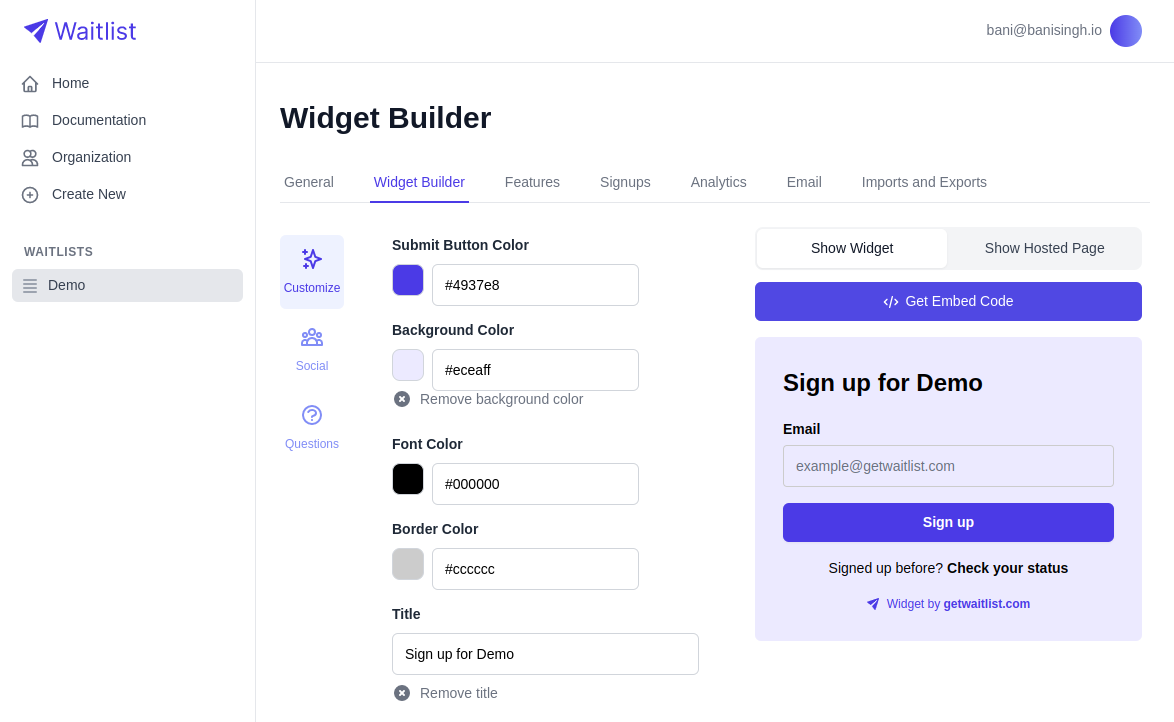"Viral loop" is a buzzword often used in the startup ecosystem with little explanation.
In simplest terms, a viral loop is when users
of a product or service grow the user base by inviting or referring other users.
This is at the core of what our Waitlists offer, and it can be a powerful tool for businesses looking to
expand their customer base in a scalable and cost-effective way. If used correctly, the viral loop can give startups a massive advantage
over their competitors who may rely on traditional, expensive marketing strategies. We will go through a couple of examples, including
Uber, Clubhouse, Robinhood, and Airbnb.
This article will take a deep dive into what a viral loop is, its importance, how you can create one for your business,
and what role refer-a-friend waitlists play. Let's get started!
1. What is a Viral Loop?
A viral loop is a growth marketing strategy that relies on users of a product or service to invite others to use the same product or service.
The reason why it is called a viral loop is that a virus spreads by one person infecting other people.
In a viral loop, one person signing up for the product will make other people sign up for the product.
This can be a powerful tool for startups, as it allows them to quickly grow their user base without spending a lot of money on marketing.
It's viral marketing, without spending money on ads.
Essentially, a
viral loop can be seen as a self-perpetuating marketing machine that can help startups to gain traction in a short amount of time.
2. Why are Viral Loops Important?
Viral loops can be incredibly valuable to businesses, especially those that rely heavily on word-of-mouth or referral marketing.
By having users
invite others to use the product, the business can grow its user base exponentially. Additionally, the more users that are using the product, the
more social proof is provided, making it easier to acquire new users. When done correctly, viral loops can create a snowball effect that can
drive a significant amount of growth for your business. This is especially powerful when a business is early-stage, when it doesn't have
the money for pay-per-click ads, or the existing SEO content for an search traffic strategy.
3. How can you create a Viral Loop?
Creating a viral loop isn't an easy task, as it requires a deep understanding of your users and what motivates them to share your product.
We've tried to make it easy with our copy-and-paste Waitlist Widgets that let you drive virality via refer-a-friend waitlists.
Beyond our Waitlist, the following steps can help you build viral loops:
- Understand what motivates your users to share. Is it the product's uniqueness? Is it the social proof provided by a large user base? Is it the potential rewards offered for referrals?
- Make it easy for users to share. Use referral programs or other incentives to encourage users to invite others to use your product. A great, simple incentive is to move the user up in line when they refer a friend: that's what we do here at Waitlist.
- Create an excellent user experience. Ensure that your product is easy to use and provides a memorable experience that users want to share with others.
- Analyze and optimize your viral loop. Track your metrics, like share count, how often a referral button is clicked, the ratio of organic to referred signups, and so forth. Use your data to identify what works and what doesn't: do the rewards work? Are users referring and signing up their friends? For example, if you're trying to build viral loops pre-launch, you can use our Waitlist Analytics to optimize your strategy.
4. Examples of Successful Viral Loops
Some examples of successful viral loops include:
- Dropbox: Dropbox provides additional storage space for users who refer new users to Dropbox. Storage is the most important thing in Dropbox, so that's a great referral reward.
- Uber: Uber gives new users a free ride when they sign up through a referral link. Again, that's a great, easy incentive to get a new user hooked on the core product experience.
- Airbnb: Airbnb offers credit to users who refer new hosts or guests to the platform.
- Clubhouse: New users on the audio app needed to get invite codes from existing users. Without an invite, you couldn't use the app. The exclusivity and invite-only system helped them grow to millions of users.
- Robinhood: see the case study we wrote here.
In conclusion, a viral loop is a powerful marketing strategy that can help startups to quickly grow their user base in a scalable and cost-effective way.
To create an effective viral loop, startups must understand why users share their products and make it easy for them to do so.
A Waitlist is a great and easy way to create a Viral Loop on day one.
Additionally, it's
important to create an excellent user experience and continuously analyze and optimize your strategy.
With the right approach, a viral loop can provide
startups with a significant competitive advantage and drive a lot of growth while saving on costs and other resources.
